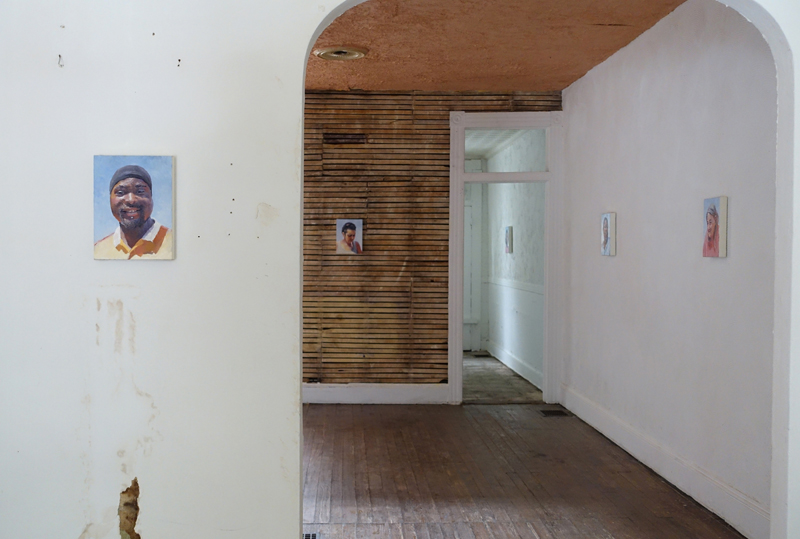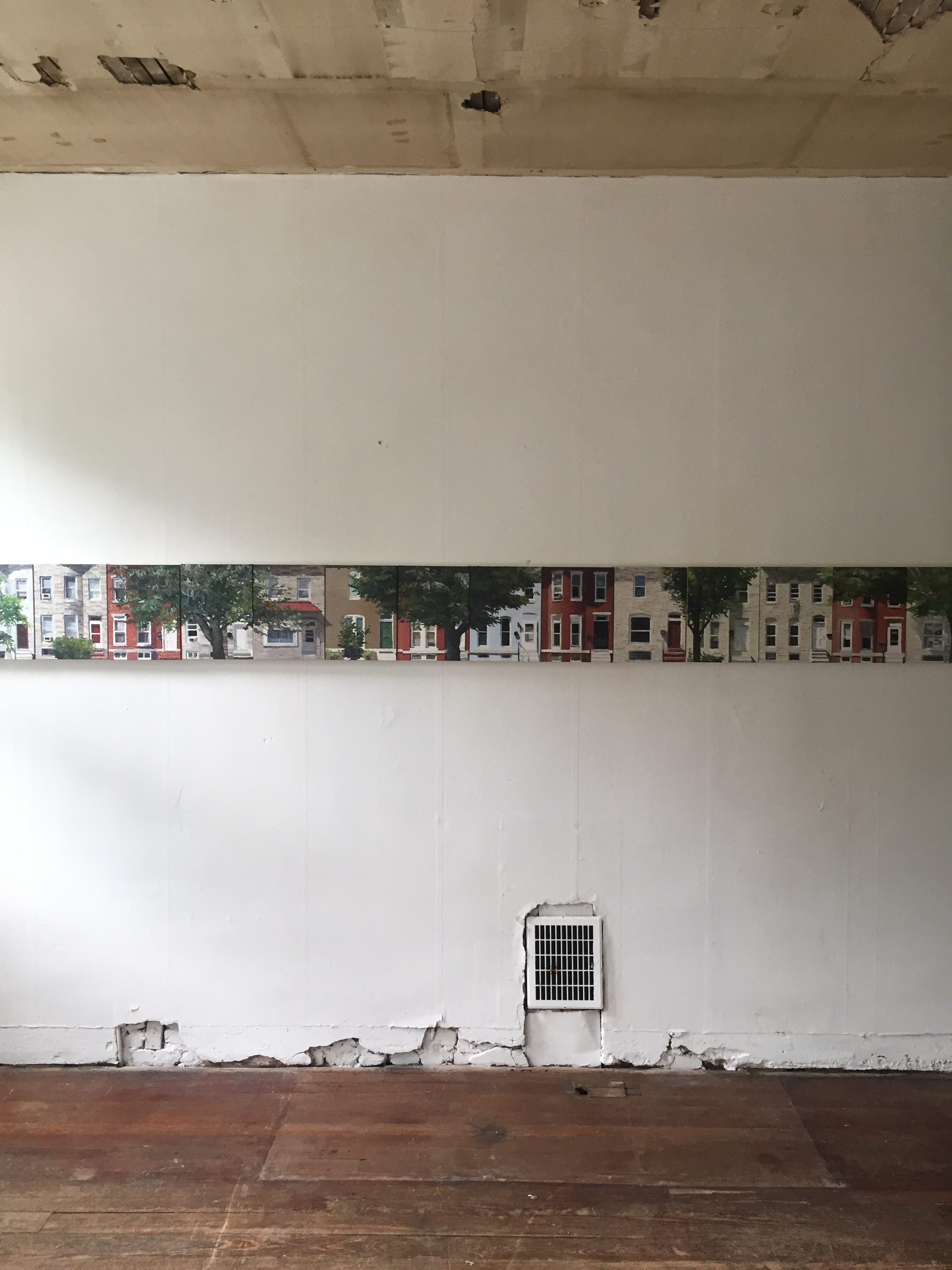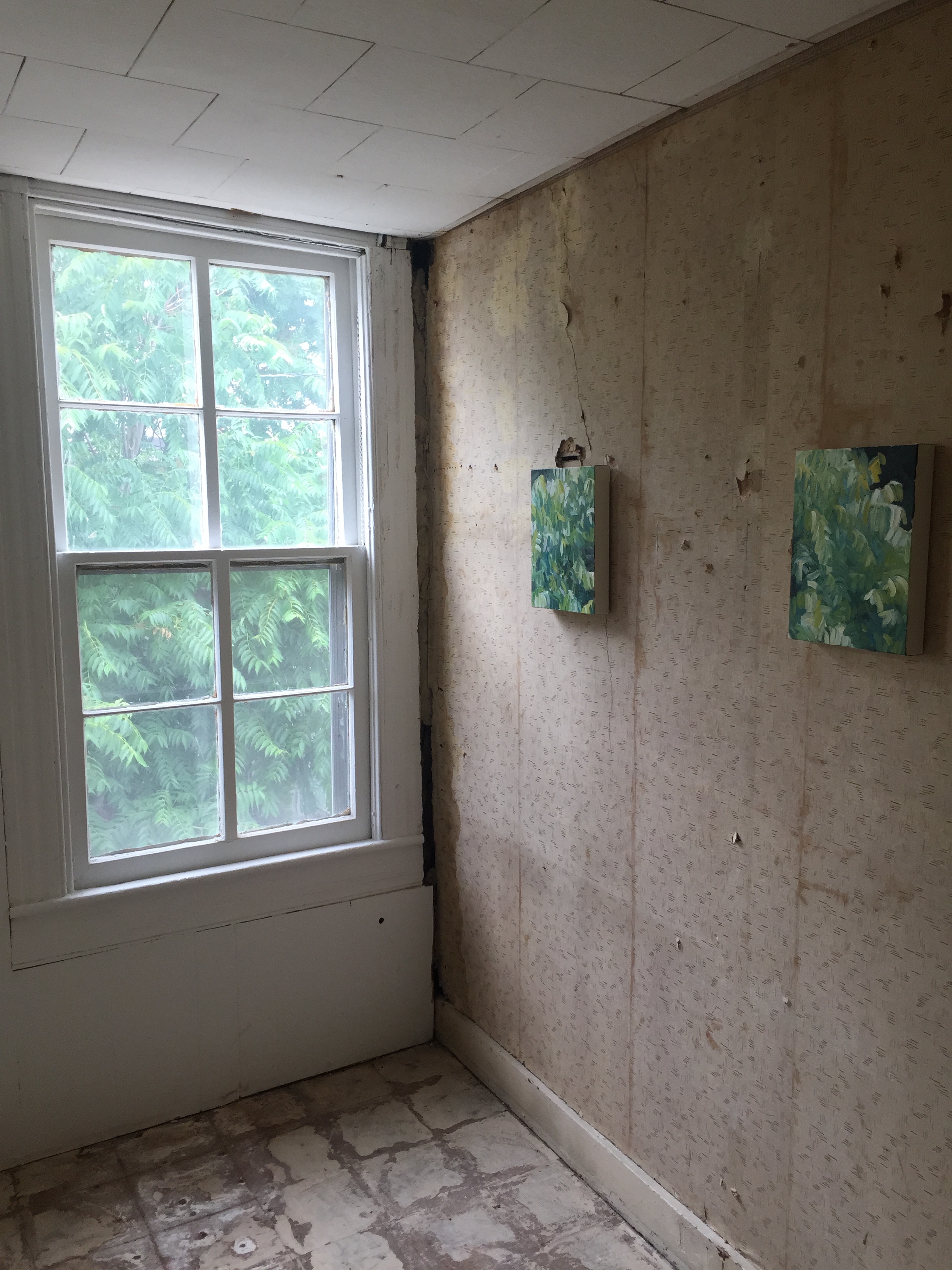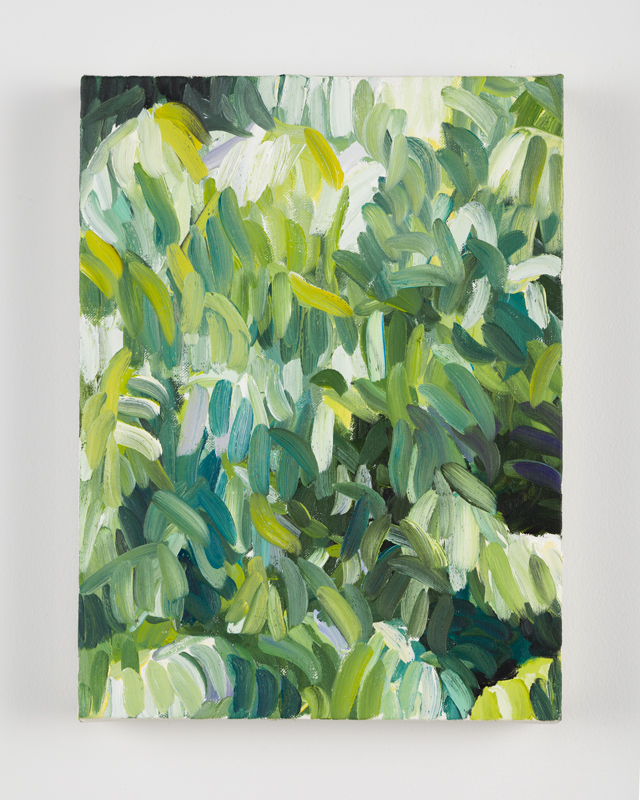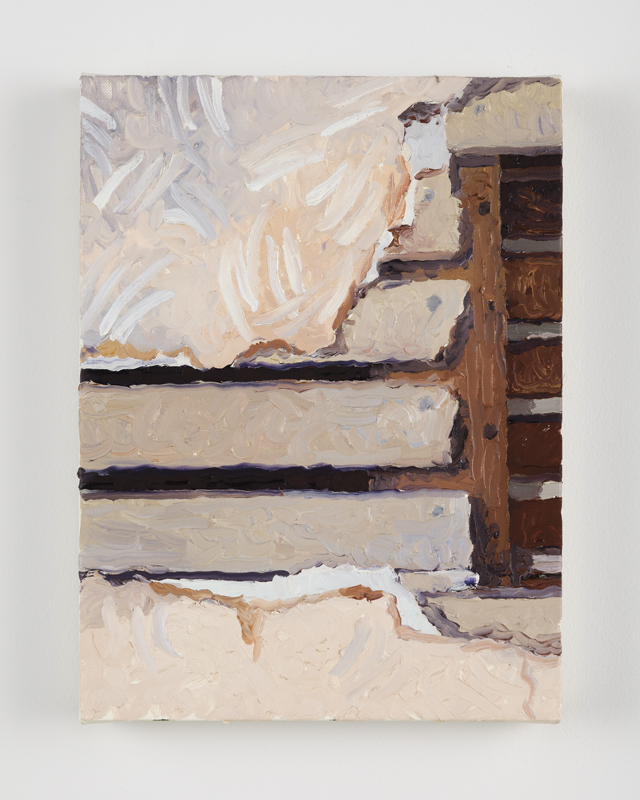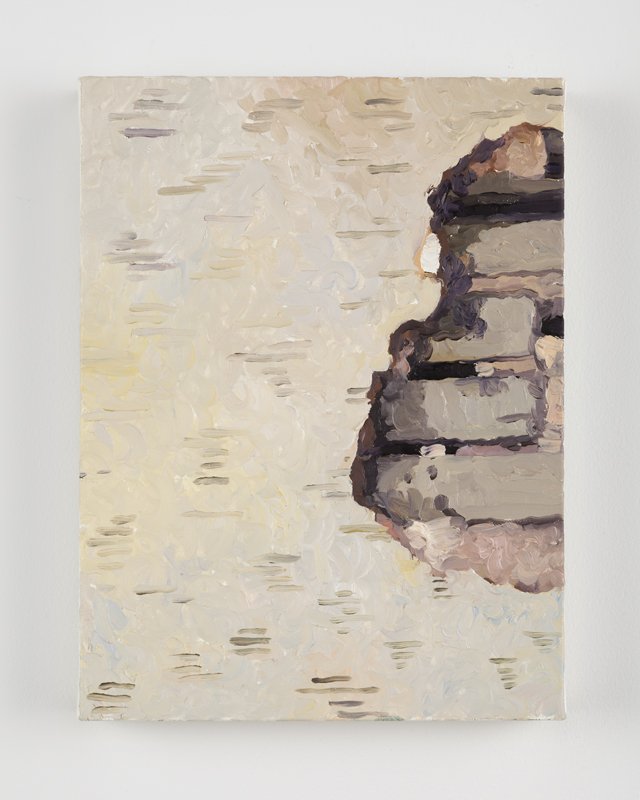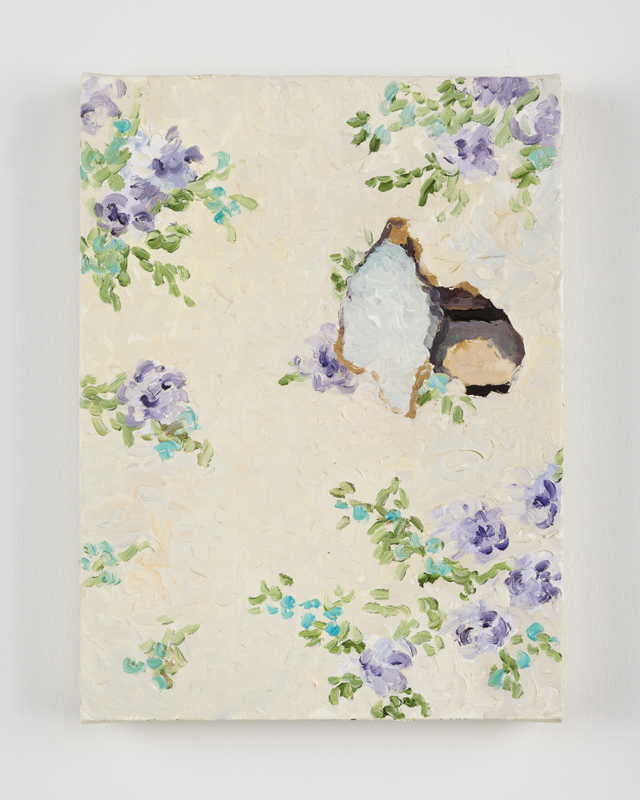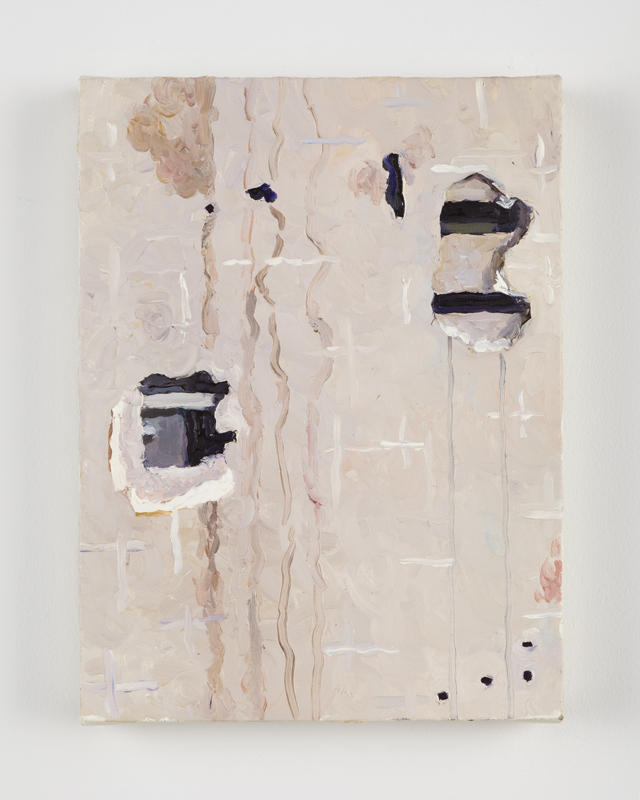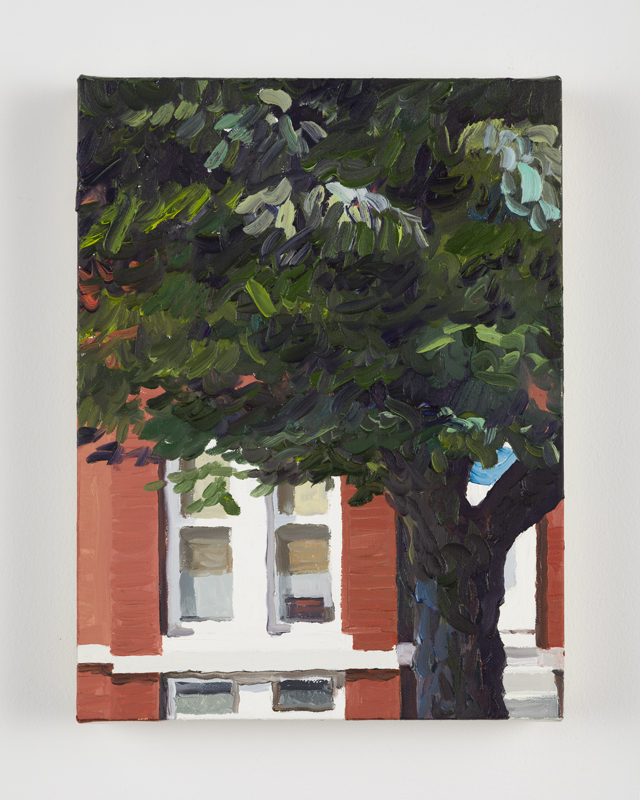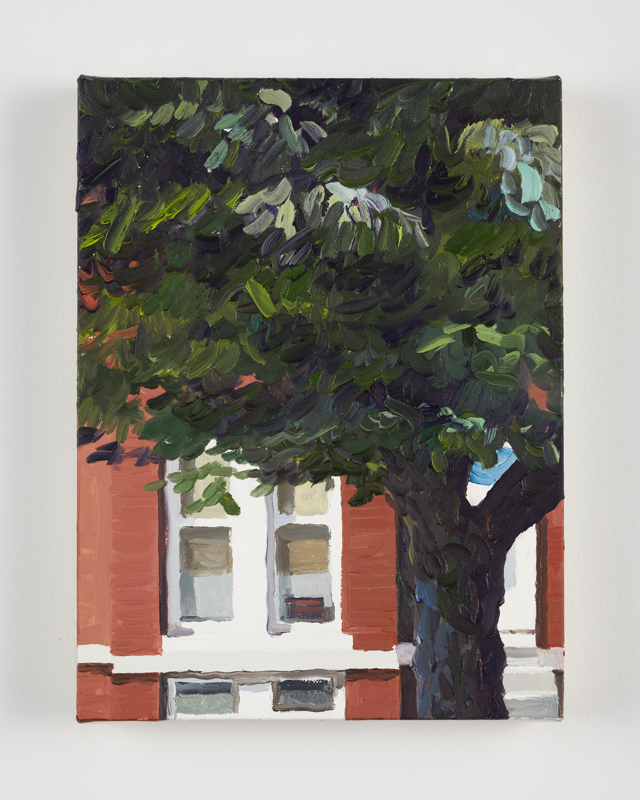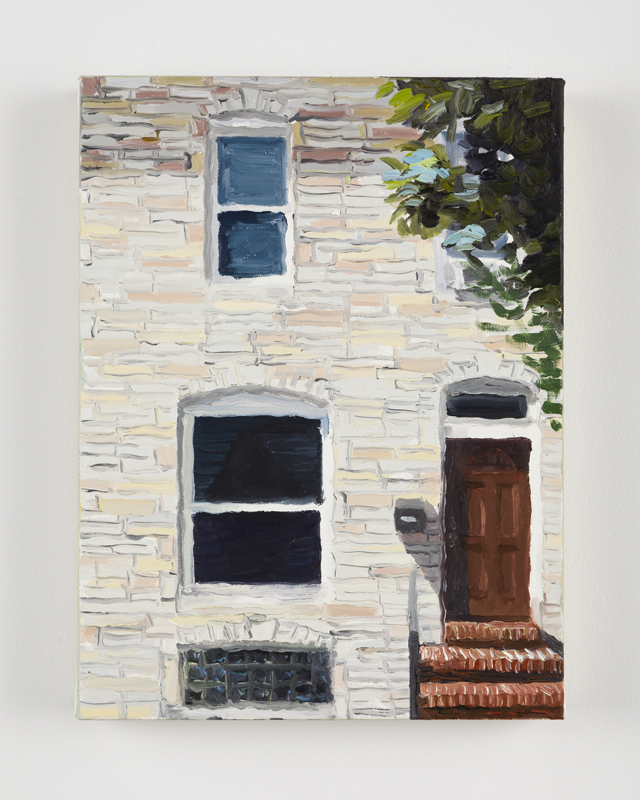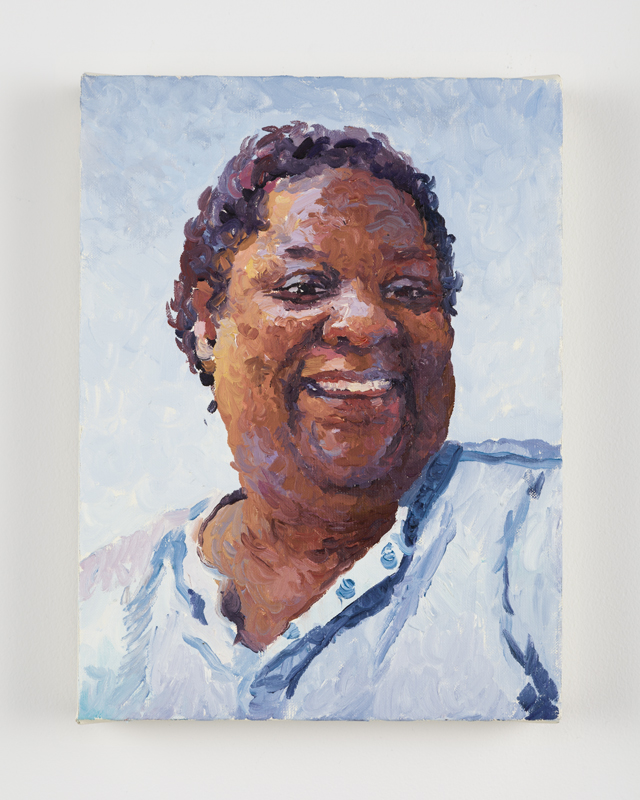Rowhouse Project, June - August, 2015
Home. This must be the place.
And you're standing here beside me
I love the passing of time
Never for money, Always for love.
-The Talking Heads, 1982
You can’t go home again. Yet, here I am, in Baltimore, the city where I was born and raised. The only city I call ‘Home’, and the only city that I will happily start a bar fight to defend. (You can take the girl out of Baltimore, but you can’t take Baltimore out of the girl.) Growing up, I remember people always told me they’d never been to Baltimore, though they’d driven by it many times on the highway between New York and DC. Believe me, we didn’t mind. There is something about growing up in a nationally maligned and so-called second city that breeds a ferocious passion for place. So when I began to think about doing a show at Rowhouse Project, I knew one thing from the start: I have to make this show in Baltimore.
In the art world, we talk a lot about ‘context’, about the things that surround a work when it’s exhibited, AFTER it’s been made (i.e. the artworks around the work, the room around the artworks, the museum around the room, and the city around the museum). Yet, we rarely talk about the context of what surrounds a work WHEN it’s being made, when everything is still in flux, when the world can still force itself in. Weather, light, people, philosophies, biases and vibe will all flow onto the work, whether I want them to or not. This permeability between life and work is thrilling: the sheer weight of chance and the death of arrogance—the end of the notion that I have total agency over my work, or any agency at all. This is why I want to go home. To let Baltimore in—the city, its streets, and its people—in the making of the work. Really, I think a disproportionate amount of paintings are made in New York City.
I’m writing this at the beginning; this is day one. So who knows what will happen, but this is the plan. For the next month, I’ll be living and working in Baltimore. Using the rowhouse at 2640 Huntingdon Avenue as a home base, transforming gallery into studio. I’ll be painting on the street, portraying the neighborhood, the neighbors, the house, the weather, the light, and the passing of time—this month, on this street, in this city. Any portraits I make will be given to the neighbors to keep, free of charge, in the hopes that by leaving something lasting with the community from the show, I might portray that any act of creation—of art—is always an act of exchange.
This show is not a work of institutional critique, but one of institutional empowerment. The neighborhood, Remington, is a delightful, mixed neighborhood. In many ways, it is a time capsule of my youth in the city. A year from now, everything will be different. Yet for now, a vibrant stoop and street culture still rule, and believe me, people are already all up in my business as I document the passing moment. I have no idea where they will push the work. And that terrifies me. Yet, I can only hope that by importing the artist rather than the art, by rendering the production of the show both within and transparent to the community, that the project might create new points of connection. Between the neighborhood and the rowhouse, between the city and me. Because—Home. This must be the place.
- Cynthia Daignault, May 18, 2015, Baltimore, MD


